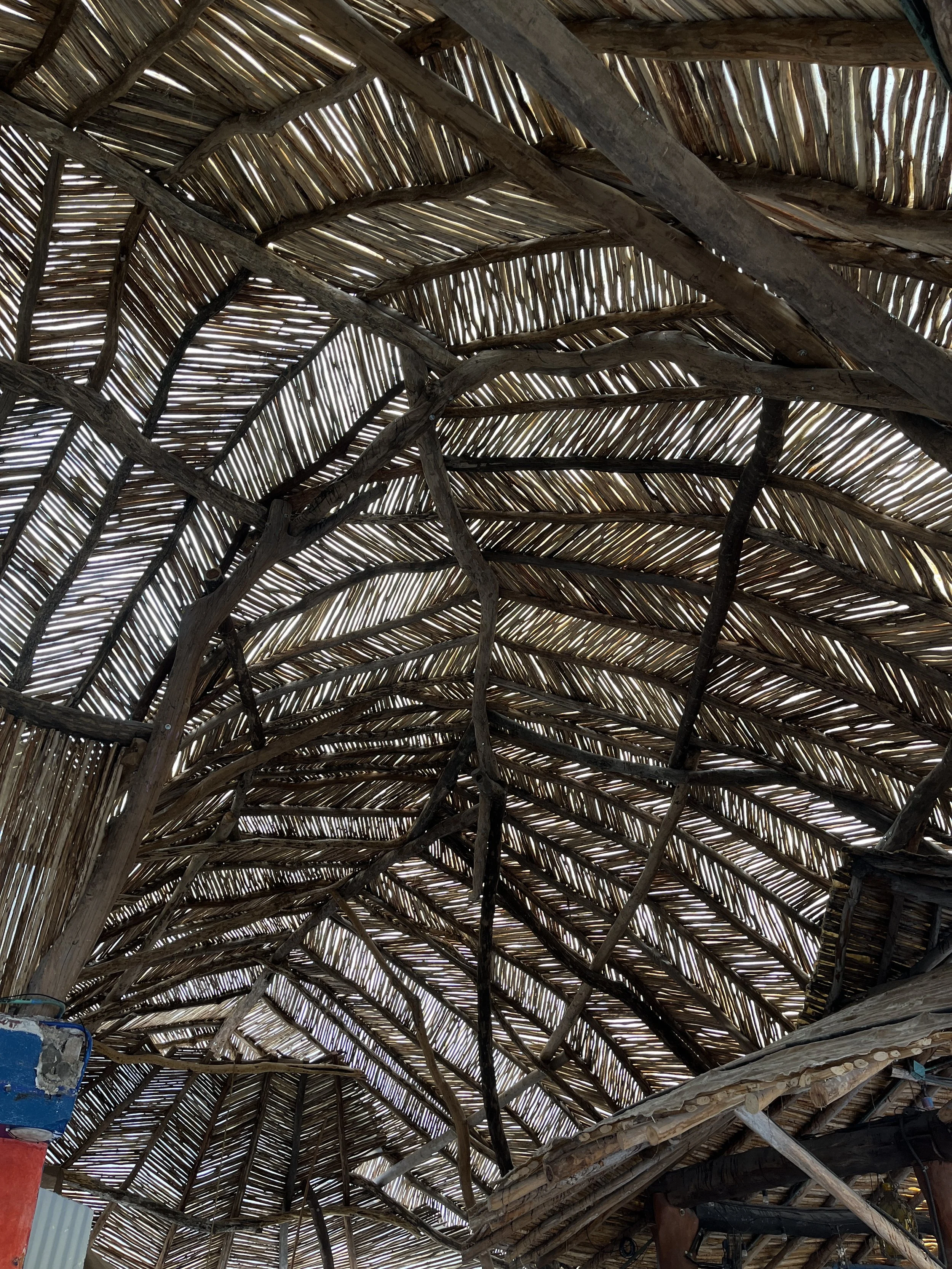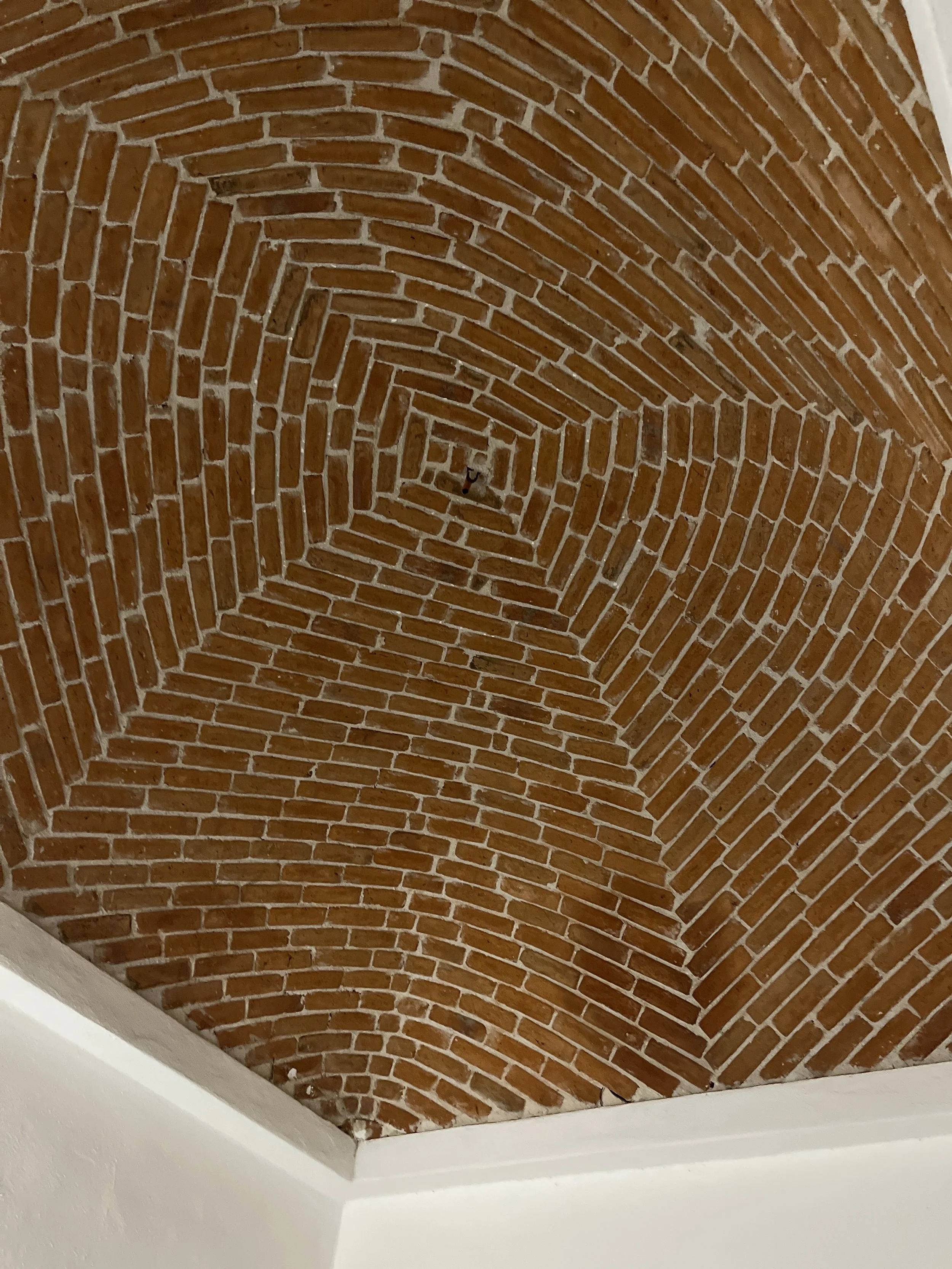Explore Natural Materials Used in Riviera Maya Designs
The architectural and interior design pays homage to the local environment and cultural heritage by integrating natural materials such as wood, thatch, and reclaimed elements. These materials contribute to beautiful, functional, and sustainable spaces that harmonize with the natural landscape, promoting an eco-friendly approach to building and living. Let's explore the top natural materials used in Riviera Maya design.
Wood
Wood, a foundational natural material in design, offers versatility and aesthetic appeal. Zapote, known for its durability and rich color, is commonly used in structural elements, furniture, and decorative features. Teak and cedar are preferred for their resistance to moisture and insects, suitable for both indoor and outdoor applications. Palm wood, prized for its unique grain and texture, adds natural warmth to spaces and is used in beams and decorative elements. These woods serve various purposes, from construction to furniture and exterior elements like decks and pergolas. Beyond aesthetics, they offer sustainability when responsibly sourced and contribute to environmentally conscious design practices in the region.
Bamboo
Prized for its rapid growth, bamboo serves various purposes in construction and decor. It's utilized for structural components, roofing, and wall panels, enhancing the strength and stability of buildings. Additionally, bamboo adds natural elegance to spaces as screens, furniture, and intricate details. Its high strength-to-weight ratio and fast growth make it an eco-friendly choice for design, ensuring durability without environmental compromise.
Limestone
Locally known as sascab, limestone serves structural and decorative purposes, forming foundations, walls, and flooring due to its exceptional durability. Its natural aesthetic seamlessly blends with the environment, enhancing facades, pathways, and garden features. Besides its visual appeal, limestone offers excellent thermal properties, keeping buildings cool in the tropical climate. As a result, limestone is indispensable in Riviera Maya architecture, combining practicality and beauty effortlessly.
Thatch and Palm
These are some of the most essential elements in the local architecture. Palapa roofs, made from dried palm leaves, adorn residential and commercial buildings, offering excellent insulation and tropical charm. Palm wood is versatile, used for beams, furniture, and decor, adding warmth and exotic allure to spaces. Palm thatch, or palapa, is commonly used for roofing in traditional and contemporary structures, providing shade and cultural significance. Renowned for its insulation properties, palapa roofs create cool, shaded environments, reflecting the region's heritage and traditional building practices.
Chukum Stucco
This is a traditional Mayan finish made from chukum tree resin and limestone, combining functionality and aesthetics in construction. Applied to both interior and exterior walls, it provides a smooth and durable surface, enhancing space aesthetics while protecting against the elements. Its natural, breathable properties prevent mold and mildew, promoting healthier indoor environments. Celebrated for its eco-friendliness and sustainability, its unique texture and earthy color enriches architectural designs, embodying the region's natural environment.
Adobe Bricks
These traditional construction elements are made from earth, clay, straw, and water. They serve as both structural supports and decorative elements, offering natural insulation and thermal mass to regulate indoor temperatures effectively. With roots in centuries-old traditions and cultural heritage, adobe construction adds authenticity and charm to architectural designs. In essence, adobe bricks blend functionality, sustainability, and cultural legacy, enriching the architectural landscape with their timeless appeal.
Natural Fibers
Henequen and sisal are sourced from agave plants or similar agave-derived fibers, known for their durability and rustic charm. Commonly used in textiles and decorative elements, they create ropes, mats, rugs, and upholstery, adding both functionality and aesthetic appeal to interiors. These fibers also contribute to wall hangings, baskets, and artisan crafts, enhancing spaces with their eco-friendly, biodegradable nature. With their rustic texture, they bring a touch of natural warmth to any environment.
Recycled and Reclaimed Materials
Sourced from old buildings, scrap, and other sources, these materials are repurposed for various applications in construction. Reclaimed wood, valued for its character and sustainability, is used for beams, flooring, furniture, and decor, adding warmth and history to new constructions. Similarly, recycled metal and glass are transformed into structural components, decor, and functional items like lighting fixtures and countertops. By repurposing these materials, construction projects reduce waste and environmental impact. Additionally, incorporating recycled and reclaimed materials adds character and history to new constructions, enhancing their appeal.
“#Invest In Your Lifestyle.
Connect with nature, appreciate jungle-inspired design.”




